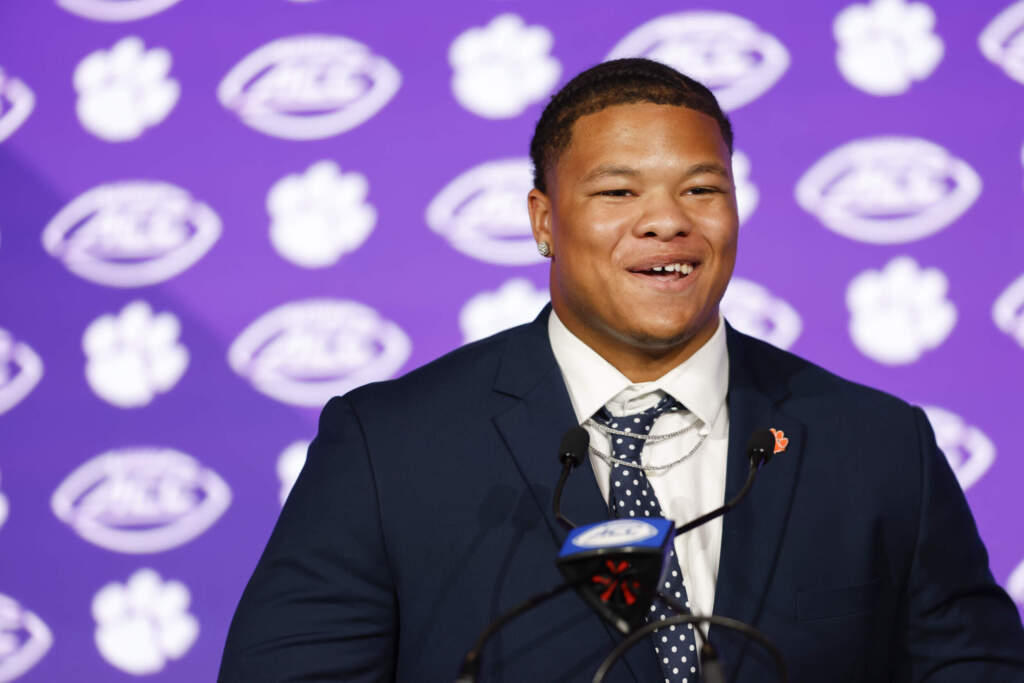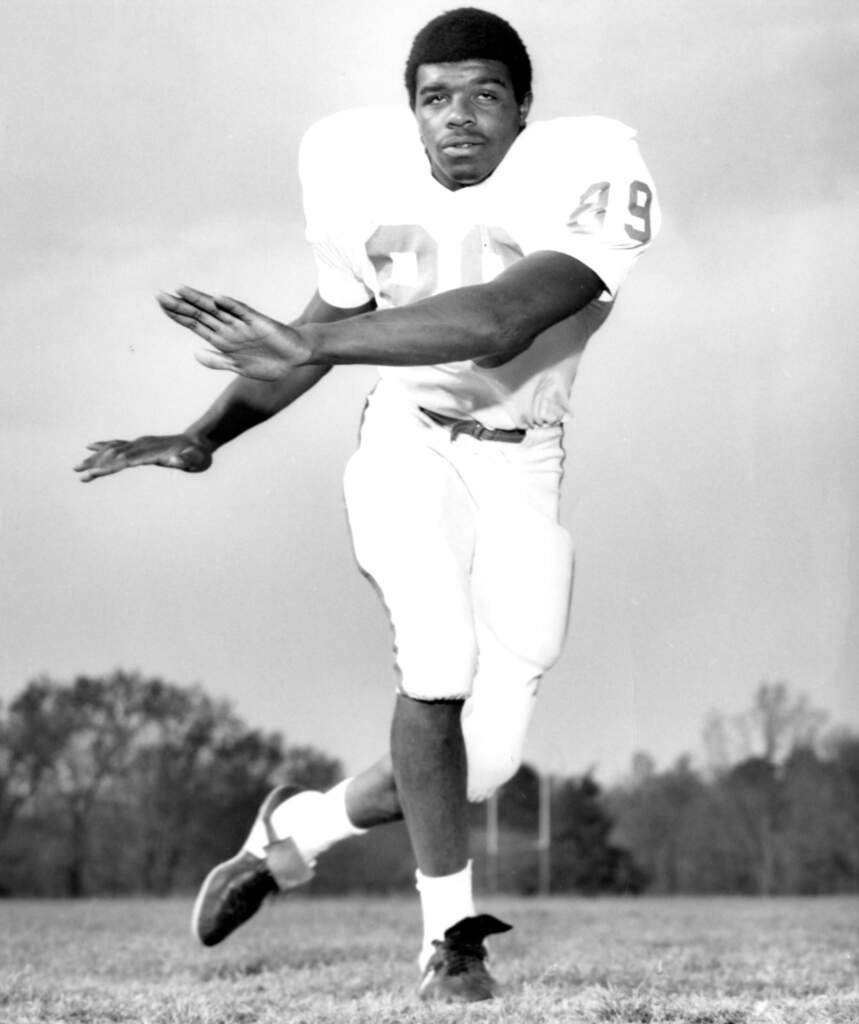Oct. 4, 1999
By Bernie Merritt
CLEMSON, S.C. – Almost everyone at one time or another has participated in some kind of sport whether it is amateur or college, semi-pro or pro. And as a participant one must work hard and compete at a level that is the higher or the same as everyone else if he or she wishes to succeed. One must possess the desire to fulfill his or her dreams and wishes no matter what obstacles are in the way.
In any sport, just like life, winning and the desire and will to work hard and win go hand in hand. For Clemson running backs coach Burton Burns the desire and will to work hard and win is as strong today as it ever was. What may slow many other people down has made Burns work that much harder.
Growing up in Louisiana, Burns knew that working hard would get him to where he wanted to be. He grew up watching his father work days and nights coaching at the high school level. It was his father’s love for the game and willingness to know his players on and off the field that taught Coach Burns to always try his best in anything he did.
“My father was a big influence on me. I always admired how he worked hard to spend time with the team and with his family,” said Burns.
However, the road to success was not going to be easy. As Burns entered high school, the country was going through a dramatic change. During the turbulent 1960’s, integration began to become a high priority for everyone involved with education and athletics. For many years high school football had been divided into two leagues, but now things had to be changed. The players and coaches would have to work harder to make everyone feel accepted. Burns realized this and kept working hard to succeed at this level and hopefully the next.
He remembers playing as a freshman in 1967 on a black St. Augustine High School team that was in a white league. For many years high school football had two leagues to accommodate everyone.
“My first high school game was the first integrated game in the state of Louisiana. They had two separate leagues for so long and for us to finally break that barrier and work hard and be a part of history is something that I will never forget,” said Burns.
As the country slowly began to calm down a bit, things for Burns slowly began to pick up. The dreams and high expectations that Burns had as a child while helping his father, started to become a little more realistic. While playing in a high school bowl game in Mississippi, he was spotted by the coaching staff of Nebraska who were impressed with his skills. The dreams of playing for a major college football program and getting a quality education seemed all too good to be true.
“I wasn’t sure what would happen to my career after high school ball. I wasn’t sure if college would even be an option. Before my senior year I was not very heavily recruited, but after Nebraska saw me things changed drastically.”
The idea of going to college was now something Burns knew was real. During the fall of 1971, Nebraska won its first national championship and the excitement and appeal of playing for such a high class university, team and coaching staff continued to make him work even harder.
“Everything about Nebraska was a big time attraction for me. I was very impressed with every aspect of their school and team.”
What impressed Burns the most was the attitude of the coaches towards the players. The players were expected to work hard on and off the field, however the coaches also paid special attention to each player’s activities off the field. Just like his father had shown he cared about his players off the field, the Nebraska coaches also showed that they cared what their players did not just on but off the field as well.
“I remember many nights when my father would bring his players over and talk or have dinner or do something. The Nebraska staff was exactly the same. They showed that they cared about the player not as just a player but as a person too. This has had an affect on me to this day,” stated Burns.
Burns continued to work hard on and off the field once he made it to Nebraska. He played on three Cornhusker teams that won at least nine games. During his career as a Cornhusker fullback he saw action in the Orange, Cotton and Sugar Bowls all under the leadership of Hall of Fame coach Tom Osborne.
“Coach Osborne had a big affect on me while I was at Nebraska. The first year I played he was just an assistant, but I still remember many nights where he would show up in study hall and help us with whatever we needed. It only got better once he became head coach.”
Burns had overcome a lot of adversity to get to Nebraska, but his dreams of playing at the next level were not to be. Although his high school and college careers had been successful, it seemed almost impossible that he could overcome a knee injury and fulfill his dream.
“The knee injury was a big disappointment, but I still got my B.S. in education form Nebraska and I still felt very fortunate to have had the chance to learn both on and off the field under a great coaching staff at such a high class university.”
After Nebraska coach Burns continued to work hard and was given the opportunity to become the assistant head coach and offensive coordinator for his high school alma mater thanks to head coach Otis Washington. From 1977 to 1979, Burns took what he had learned from his father and Osborne and used it to help lead the St. Augustine Purple Knights to three district titles and back-to-back Class AAAA state championships in 1978 and 1979.
After his stay at St. Augustine Burns landed an assistant coaching job on a district championship team at Booker T. Washington High School.
The following year Burns once again teamed up with coach Washington at Southern University. “I owe a lot of thanks to coach Washington. He gave me my first job at the high school and college levels. Just like my dad and coach Osborne, he taught me things that I will never forget,” said Burns. During his five-year stint at Southern, the Jaguars finished in the top two of the Southwestern Athletic Conference on three occasions. Burns would return to his alma mater for a second term that would give the St. Augustine Purple Knights three more district titles in 1987, 1992, and 1993.
After the second stay at St. Augustine, coach Burns began to focus on the job Tommy Bowden had given him as running backs coach at Tulane. “Coach Bowden didn’t know me any more than anyone else, but he still saw the potential for me to be a coach at the college level. I owe a lot to him and all the great coaches who taught me so much as a player and coach.”
The two seasons he and Bowden spent at Tulane were very productive and in 1998 the team finished 12-0 and was ranked 7th at the end of the season. Burns’ running backs also worked hard in 1998 as the Tulane ground attack ended the year ranked 23rd nationally, averaging 202.4 yards per game.
Burns has continued to coach his players to work hard and never give up. This philosophy is very evident, as several of his players have gone on to the NFL including Jerald Sowell, whom he coached at Tulane. He is living proof that the desire and will to win go hand in hand with success on and off the field.
 Duke
Duke 
 Florida State
Florida State  Louisville
Louisville  Furman
Furman  South Carolina
South Carolina  LSU
LSU  Troy
Troy  Georgia Tech
Georgia Tech  Syracuse
Syracuse  North Carolina
North Carolina  Boston College
Boston College  SMU
SMU 





